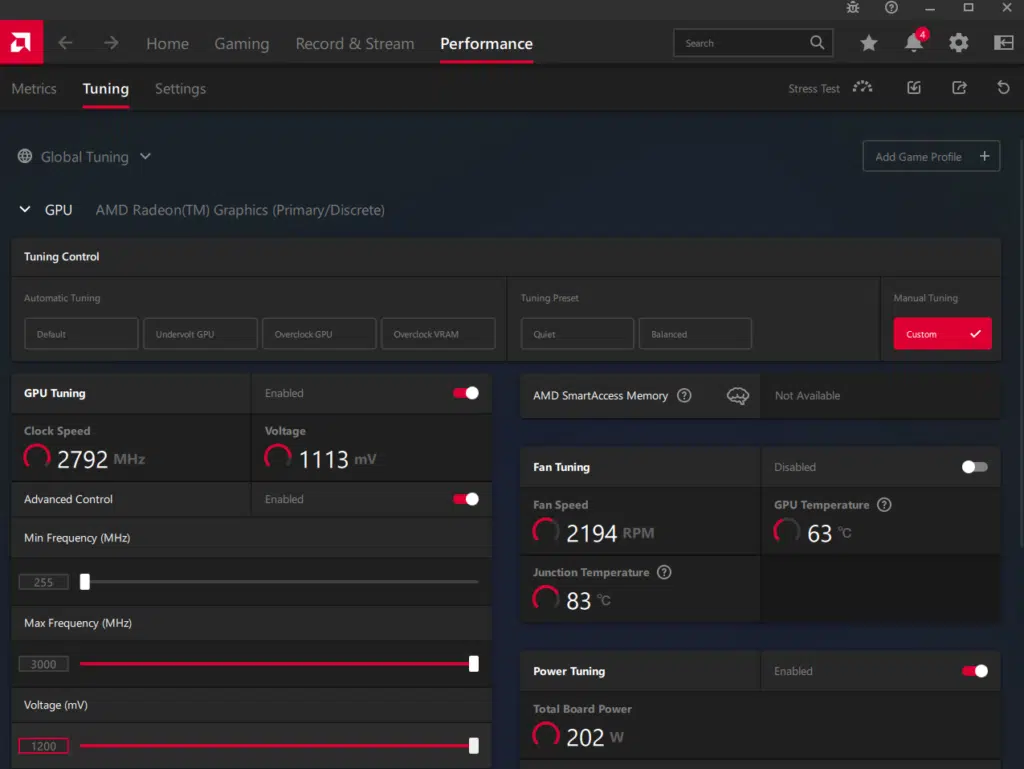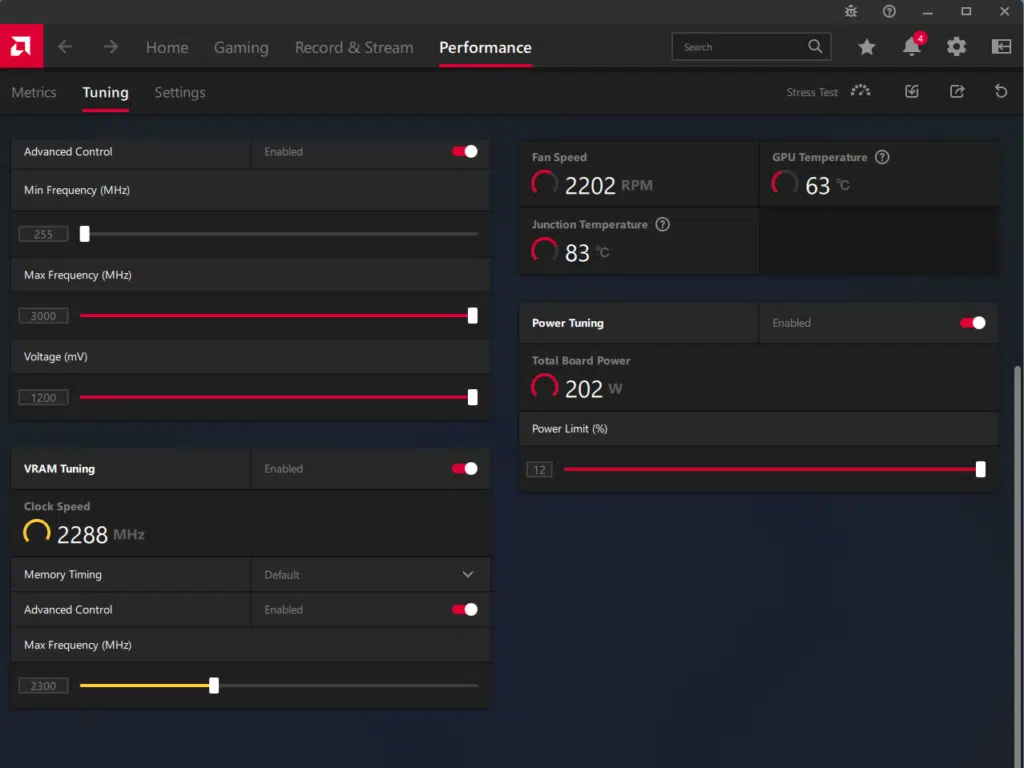Overclocking the SAPPHIRE PULSE AMD Radeon RX 7600 GAMING OC
Prior to overclocking, we will determine the base GPU clock speed. Both NVIDIA and AMD have dynamic base speeds, both have a “Boost” speed. (GPU Boost or Boost Clock, depending on the brand.) Generally, either brand’s card will exceed the “Boost” dynamically. To determine the “baseline” we record the GPU frequency in our Cyberpunk 2077 manual run-through. This is a lengthy manual run at Ultra settings. Data is captured for frequency, temperature, voltage, and power using a GPU-Z sensor to log the data.

Overclocking the SAPPHIRE PULSE AMD Radeon RX 7600 GAMING OC card was a bit lackluster. This was due to the fact that there are some hard software and possibly firmware/BIOS limits in place with the Radeon RX 7600 GPU. The software limits us to just a maximum frequency of 3000MHz, while the default frequency is already set to 2875MHz not giving us much headroom for overclocking. If you are familiar with the AMD Radeon Adrenalin Software and RDNA 3 video cards you understand that what you set in the slider in GPU clocking is the maximum possible and is rarely ever achieved, as it’s a sliding scale of frequency.
We used AMD Radeon software to test the overclocking. As stated we pushed the GPU slider to the maximum, as well as the power slider (a gain of 12% more power). The GPU voltage is at its maximum by default. We did increase the memory frequency from 2250MHz to 2300MHz. This increased memory throughput from 288GB/s to 294GB/s. The default out-of-box GPU frequency slider is set at 2875MHz and testing shows an average of 2672MHz GPU frequency while gaming.


When we overclock the card using the Radeon software, with the slider now pushed as far as it will go (capped at 3000MHz) we see an average frequency of 2785MHz during our run-through. All in all the out-of-box boost is 47MHz greater than the MBA game clock or about a 2.5% increase. Our overclock advances us 160MHz or about 6%. Screen captures are shown of the software with the settings we used. The first set is the Adrenalin default, and the second is our overclock.


The cooling solution worked as advertised on our SAPPHIRE PULSE RX 7600 OC. The fans were left on automatic, only spun up to 49%, and were not detectable at all. The GPU temperature was only 64C. Given this cooling ability, it seems that there is more left in this video card as far as overclocking is concerned. All our test suite games were perfectly stable using the setting described above.
